An altar traveling across the United Kingdom in 22 separate crates. A shipwreck survivor primed to reassemble the parts into a glorious ecclesiastical shrine to the English Martyrs at a church that has a story stretching back to the days of Henry VIII and the reformation.
It’s a scene setting that would be perfect for a big-budget documentary, and yet, it’s an event that has happened in the relative monastical quiet of St Mary’s Catholic Church in Bodmin.
So, when you get an email inviting you to meet the man putting together the glorious altar once again, it's something you just can’t refuse.
The shipwreck survivor is a truly interesting gentleman with a thousand tales to tell, a sculptor and stonemason by the name of Philip Chatfield.
His connections with Cornwall were not exclusive to the erection of sacred religious stonework, but rather it was off the Cornish coast in May 1995 where Philip experienced a life-changing event.
Part of a crew sailing on the Maria Assumpta, then the oldest sailing boat in the world still sailing, for it had been built in 1858, Philip had been a regular crew member, a carpenter, and gunner on the ship.
Upon hitting the rocks at Rump Point, three of the crew passed away; 50-year-old Anne Taylor, 19-year-old Emily MacFarlane, and 24-year-old John Shannon. Philip nearly drowned during the event, which saw the captain of the ship, Mark Litchfield, jailed for the deaths of three crew members.
Since that event, Philip has dedicated his life to his passion for stone making, sculpting, and working on the Severn Valley Railway, in Wales, a place he calls home when he’s not traveling the country putting his sculpting skills to use in a variety of settings. If you ever find yourself facing the bust of John Smeaton in Smeaton’s Tower, Plymouth, you’ll find yourself admiring another of Philip’s creations.
The connotations between sailing and religion do not stop there, either. In 2022, Philip teamed up with campaigners and Hay St Mary’s to sculpt and sail a wooden sculpture of the Virgin Mary up the River Wye to raise awareness about pollution in the river.
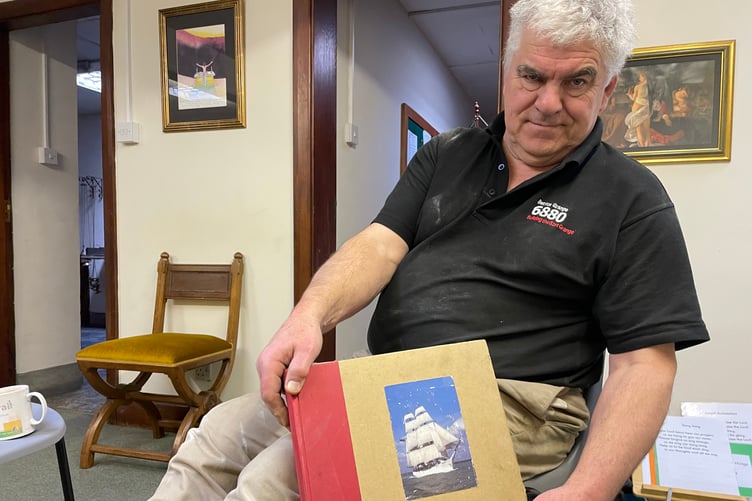
THE ALTAR making the trip to Cornwall was constructed in the early 1920s and has spent its time in service at St John’s Seminary, in Wonersh, near Guildford, Surrey.
Approximately a hundred years of playing a part in the education of the latest intakes to the Catholic Church past and present, the closure of the seminary meant that a new home had to be found for the glorious piece, celebrating three of the English Martyrs; namely John Fisher, Thomas Becket, and Thomas Moore. Through various conversations through the hierarchy of Catholicism in England, it was offered to the Catholic Church of St Mary and St Petroc.
Made of Belgian black marble and Italian alabaster, the altar dominates the space which it is set to call home – a wall at the back of the church.
When you consider the history and grandeur within the interior of the St Mary’s Catholic Church, it is surprising to learn from Philip that prior to this installation coming to Cornwall, its splendour wasn’t the easiest to view, having been placed in an alcove which was difficult to see or appreciate from any angle which was not directly facing it.
Dismantled with precision care and accuracy and brought to Cornwall in 22 wooden crates, Philip was tasked with the laborious task of single-handedly reconstructing the altar over a period of approximately two weeks.
When asked why he was doing it on his own, he said this was mainly due to the need for the reconstructed altar to be absolutely perfect in its execution. He said: “Because of the way this altar was constructed, in order to accurately rebuild it, it has to be millimetre perfect. There’s absolutely no room for error. By having other people involved, you increase the potential for mistakes happening which might not be noticed, and this way I can get it done on my own.”
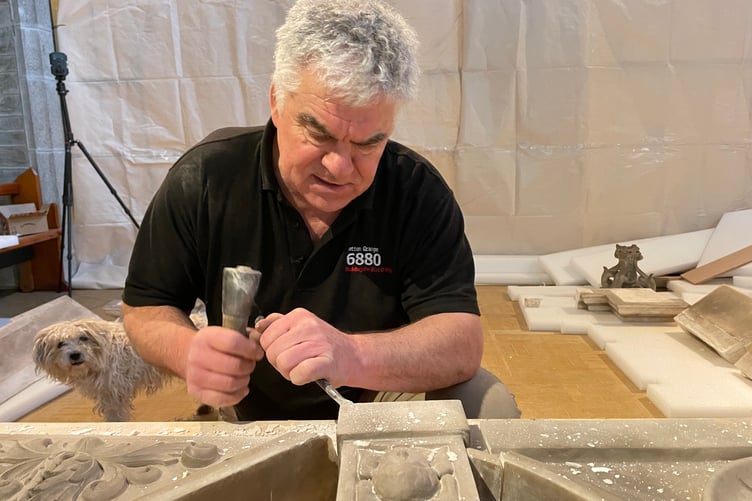
PREVIOUS to the altar dedicated to the Martyrs coming to St Mary’s Church, all that stood in the place where the new erection has ascended to tower over all below it was a simple, block construction of such a limited remarkableness that it has been condemned to a future as a ‘serving table’.
Our first visit to meet Philip and the altar came approximately a week before its completion. The sound of the organist rehearsing accompanies Philip in his work, as he gently attaches some stonework to the top of the structure.
It was already clear that this would be a grand structure, albeit its incomplete state gave little clue to the majesty that would await our return the following week. There were not yet the portraits of the three Martyrs, nor the finished construction that would give the full indication of the imposition the new altar would bring to this historic Bodmin church.
Philip explained the reason he became a sculptor and stone mason, with the story stemming back to a childhood in Plymouth which began in 1965 after his father, Major John Chatfield, was a senior officer with the 3rd commando brigade, based at Stonehouse Barracks. He said: “It was the Smeaton Tower that inspired my interest in maritime architecture and sculpture.
“One of the reasons I enjoy the work I do, whether it is Smeaton’s tower or in a church like this, is that as I create the sculptures, I feel I am connecting with the subject I am creating. So, by erecting this altar featuring the three martyrs, I feel as if I am connecting with their lives, their stories and helping to bring that memory to life while in spectacular, historical buildings as churches often are.”
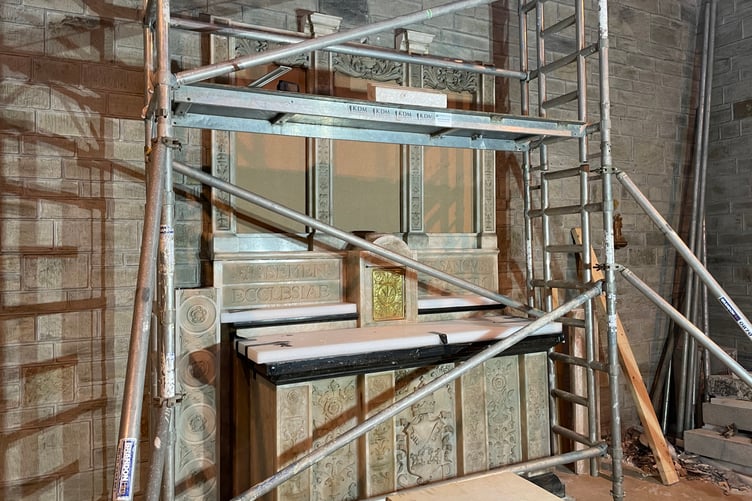
A WEEK later and we’ve returned to St Mary’s Catholic Church. Sunday Mass is drawing to an end when we’re greeted by Philip. Being careful not to interrupt the worship of the congregation which has joined Father Robbie Low for this week’s mass, Philip shows us the vast, ornate structure which is the finished product that first entered the church in 22 crates.
He tells us of a finishing touch in place for the altar’s new home – for buried behind it is a time capsule, created by children of the local catholic school, connected to the church and located a short distance away containing items and messages to a future being who might find themselves taking the structure to the next part of its history.
Shortly, the parishioners will be invited to see the altar for themselves, but our photography of the end product is momentarily interrupted by a member of the clergy inviting Philip to join them at the Lectern, in order to present him with a gift, a picture on behalf of the Church to thank him for his work.
The end of mass brings the first smattering of parishioners, most of which had not seen the altar before today, with more quickly following as the hubris of the events become apparent.
There is a truly delighted atmosphere emanating from the worshippers, equally curious and ecstatic at the latest addition to their place of worship. Questions abound for Philip regarding the story of the altar, its construction, and the occasional request for a photo from those for whom the enjoyment of this will persist beyond the time Philip has retreated to his home in Wales to once more spend time on his beloved Severn Valley Railway.
Father Robbie joins those still in attendance, and he seems pleased with Philip’s work. He tells us of the privilege bestowed upon the church to have this altar here. He said: “We are immensely privileged to have in our worship this thing of such great devotional beauty and to inherit a wonderful piece of church work.
“I’m absolutely thrilled we’ve got this here in our Church, it is a real gift and Philip has done an incredible job. He is an extraordinary talent and it’s been a real joy to have him constructing this for us.”
When you consider that the story of the church the altar now calls home stretches back centuries, it's not hard to imagine that in another 100 years, this is the place the altar will still call home.
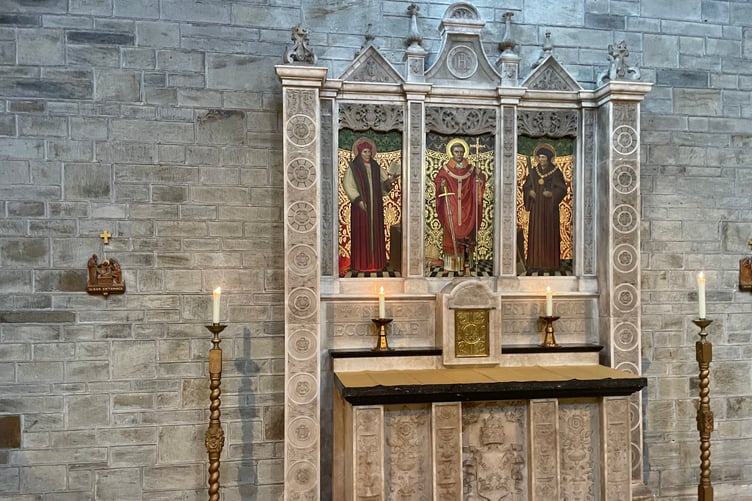
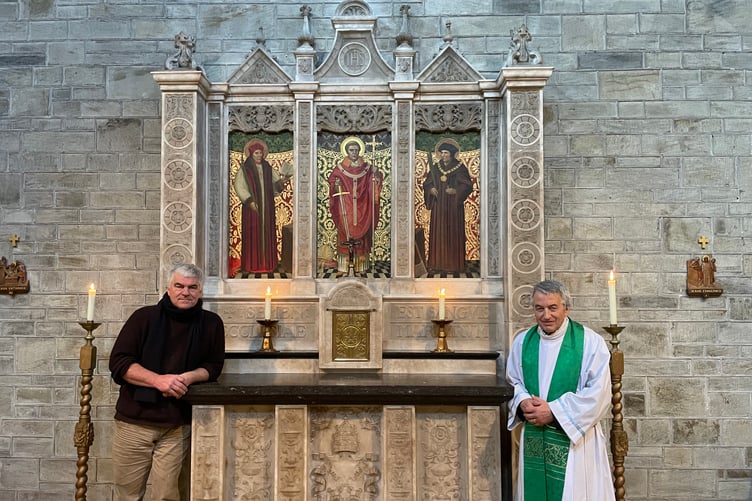
.jpeg?width=209&height=140&crop=209:145,smart&quality=75)
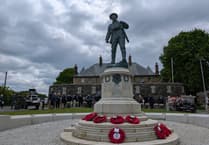
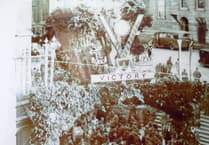
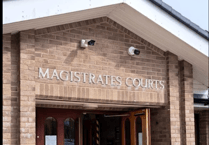
Comments
This article has no comments yet. Be the first to leave a comment.